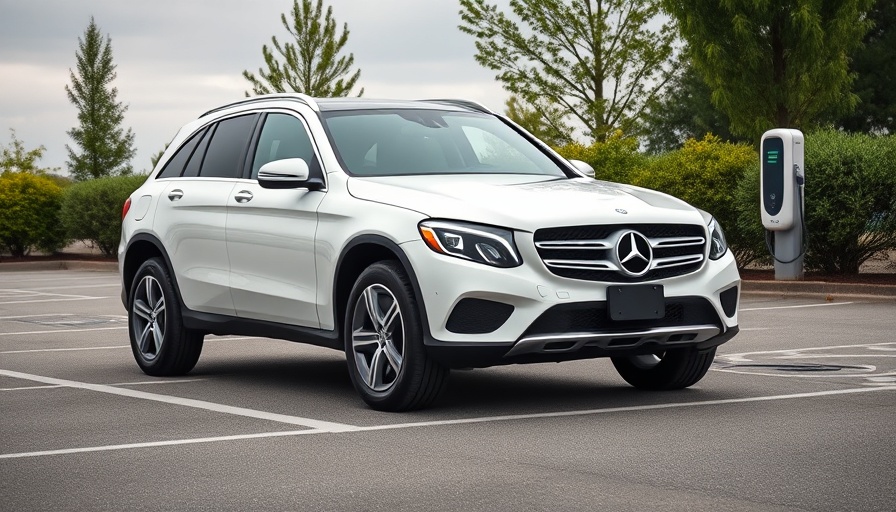Gary Sillman’s Core Thesis: Why Integrated Digital F&I Is Crucial for Dealer Success "One of the biggest misconceptions is that the systems they're using talk to each other — but often, they don't. A true end-to-end digital F&I process must connect from lead capture all the way through final paperwork under one seamless roof." — Gary Sillman, Global F & I Solutions LLC The automotive industry is undergoing a digital revolution in the finance and insurance space, yet many dealerships mistakenly assume their technology systems communicate seamlessly. According to Gary Sillman, founder of Global F & I Solutions LLC and a leading expert in digital F&I process innovation, this belief is often far from reality. Sillman draws on his extensive background in simplifying complex compliance requirements and integrating proprietary dealership workflows to reveal an eye-opening truth: disconnected systems create invisible walls, leading to compliance risks and lost business opportunities. Building on his years of transforming dealerships into nimble, compliant, and digital-first operations, Sillman explains that the only way to ensure true compliance and customer trust is through an end-to-end integrated digital F&I process. "Success in today’s environment depends on a platform that connects every stage—from the first digital lead to the final signed contract—without redundant data entry or risky handoffs," he emphasizes. For dealership owners, F&I directors, and sales managers striving to future-proof their business, ignoring this fundamental shift is no longer an option. The Compliance and Trust Benefits of a Fully Connected Digital F&I Ecosystem "With digital systems, customers can complete financing paperwork wherever they want — at the dealership, at home, or on vacation — all through a single integrated portal, which boosts compliance and trust." — Gary Sillman, Global F & I Solutions LLC Imagine a customer experience where buyers can move from browsing to buying to financing anywhere and anytime, with data automatically flowing through one secure digital F&I process. Gary Sillman highlights that a fully connected digital workflow is not just a matter of convenience, but of compliance and trust. In an era where regulations tighten and consumers demand data privacy, a disjointed approach can leave dealerships exposed to significant legal risks. Sillman’s experience shows that unified digital F&I systems protect both dealers and consumers by capturing, storing, and communicating personal information in a compliant, auditable, and error-free manner. According to Sillman, "The stakes for compliance are higher than ever. With the right digital F&I platform, you eliminate the gaps that regulators love to find—and you send a powerful message to customers: their information is secure, and their investment is valued." This vision is reshaping how leading dealerships position themselves in the digital era, leveraging integrated tools provided by companies like Global F & I Solutions to maximize customer trust, regulatory security, and operational speed. Eliminating Risk: How Disconnected Systems Cause Compliance Gaps Many dealerships invest heavily in technology, yet overlook a critical risk: when systems don't truly communicate, compliance becomes a matter of chance instead of certainty. Gary Sillman points to a common scenario: digital leads are generated via social media or marketing platforms, but those leads aren’t automatically integrated into the dealership’s CRM. The result? Staff are forced to manually copy information across systems, creating opportunities for data loss, errors, and regulatory violations. Sillman’s experience underscores that these invisible cracks can open dealerships to stiff penalties and loss of customer goodwill. According to Sillman, "Dealerships need to demand true integration, not just superficial connections," especially as regulations grow around personal data handling in the auto industry. By adopting an end-to-end digital F&I process, dealers close these compliance gaps, ensure smooth data transitions, and safeguard every step of the transaction. Protecting Customer Data and Personal Identifiable Information (PII) in Digital F&I The backbone of customer trust in the digital car buying journey is the secure management of personal information. Gary Sillman stresses that "compliance in today’s world hinges on protecting sensitive PII from the moment it enters the CRM until the deal closes." He advocates for the adoption of integrated CRM platforms that are built to shield customer data, automate regulatory requirements, and leave an immutable audit trail. Sillman’s advice is crystal clear for dealership leaders: "Never assume your CRM and F&I software are talking just because your vendors say so." Dealerships must proactively vet each system for real interoperability, putting in place secure digital vaults and rigorous data protocols, such as those championed by Global F & I Solutions. This approach not only meets the letter of the law but delivers peace of mind for buyers—an invaluable asset in a privacy-conscious marketplace. Common compliance pitfalls from disconnected dealership software
How integrated CRMs safeguard consumer information
Tips to verify system interoperability before adoption From Sale to Service: Expanding Digital F&I Beyond the Dealership Floor "By connecting F&I to the service drive, dealers can now offer protection products throughout the customer lifecycle, not just during the sale, strengthening relationships and boosting lifetime value." — Gary Sillman, Global F & I Solutions LLC Gary Sillman’s vision of the digital F&I process doesn’t end with a signed contract. Forward-thinking dealerships are now extending digital F&I functionality into the service lane, where they can present and enroll customers in protection products after the sale. According to Sillman, this expansion is a game changer for customer retention and revenue growth. "Once you break down the barriers between F&I and service, you strengthen your brand’s relationship with the buyer for years," he notes. Sillman illustrates how technology bridges the once-siloed channels of F&I and service: "Today’s platforms allow sales teams and service advisors to securely access the same client data and offer relevant products seamlessly, no matter where the customer touches your dealership." For modern dealer principals and F&I directors, this continuous digital engagement is the new gold standard—one that supports compliance, builds trust, and amplifies every customer interaction post-sale. Digital F&I Integration: Enabling Seamless Selling in the Service Lane Bridging F&I with service isn’t just about cross-selling—it’s about building a dealership ecosystem where the customer feels consistently valued and protected. Gary Sillman shares, "When you digitize every point of engagement, every offer and communication is tracked, audit-proof, and tailored to the customer’s actual needs." By removing silos, dealerships can be proactive, extending offers for service contracts, GAP, or tire and wheel coverage with the same compliance assurance as in the F&I office. The comparison is striking between legacy systems and modern digital F&I process models. While traditional approaches rely on manual filing and isolated conversations, today’s best-in-class digital workflows—such as those supported by Global F & I Solutions—enable service advisors to confidently discuss and enroll customers in financial protection products, all without risking compliance gaps or duplicate data entry. This transformative approach not only captures more revenue but dramatically increases the lifetime value of the customer relationship. Traditional F&I Model
Digital Integrated F&I Model F&I products sold exclusively in office
F&I products available service lane & post-sale Manual paperwork prone to errors
Automated processes minimize mistakes Compliance harder to verify
End-to-end digital audit trail ensures compliance Gary Sillman’s Top Takeaway: How Digital F&I Saves Time and Reduces Errors "Dealers will be so happy they no longer see mistakes on bank contracts or DMV paperwork. A digital F&I process frees up time to focus on what matters beyond admin." — Gary Sillman, Global F & I Solutions LLC According to Gary Sillman, the ultimate promise of the digital F&I process is not just compliance, but a radically improved dealer experience. As he explains, the old headaches of inconsistent data, repeated manual entry, and costly paperwork errors are eliminated. "When you unify your systems under one digital roof," Sillman observes, "your people can focus on customers, not chasing signatures or fixing mistakes." These operational improvements have a direct impact on both dealership profitability and customer satisfaction. By automating approval workflows and integrating state-compliant digital contract signatures, dealers dramatically reduce their turnaround times and virtually eliminate administrative pain. For many leaders, the move to a digital F&I platform is the single most effective step they can take toward running a more agile and customer-centric dealership in today’s highly regulated environment. Streamlining Documentation: Fewer Errors, Faster Approvals The transformation from manual to digital documentation is at the core of the new dealership experience. "The number one frustration for any finance manager is having to redo paperwork because of mistakes," Sillman emphasizes. By leveraging digital e-signature workflows and real-time document validation, dealerships can approve deals faster and with fewer touchpoints, which minimizes the threat of human error and regulatory non-compliance. According to the expert perspective, financial resilience for dealerships stems from digitizing their processes to avoid costly administrative errors on contracts, titling, and funding submissions. Sillman’s solutions at Global F & I Solutions embrace this technology-driven reality, ensuring every contract—whether processed in the store or remotely—passes automatically through compliance checks and integrates seamlessly with CRM and DMS systems. Improving Dealer Efficiency and Customer Satisfaction Efficiency and customer satisfaction are two sides of the same coin in today’s automotive market. Gary Sillman makes it clear: "When systems work together and compliance is built in, everyone wins—dealers have more time for customers, and buyers enjoy a frictionless, confident purchase journey." Dealers embracing a digital F&I process not only see a reduction in compliance-related stress but also benefit from faster funding, more accurate reporting, and a stronger brand reputation. For Sillman, digital transformation is about empowering teams with technology that supports—not replaces—the personal relationships and trust that dealerships thrive on. The journey starts by evaluating software partners for true interoperability, then investing in comprehensive staff training so that every customer touchpoint is professional, compliant, and efficient. With the support of adaptive solutions offered by Global F & I Solutions, automotive retailers are poised to become the new benchmark for customer care and operational excellence. Three benefits of adopting a fully digital F&I process
Key points to evaluate software vendors for integration
Steps to train dealership staff on digital compliance workflows Summary: Embracing Digital F&I as the Future of Automotive Dealership Compliance and Customer Engagement The digital transformation of the F&I process has arrived—and it isn’t just a passing trend, but the new competitive edge for automotive dealership leaders. Gary Sillman’s expertise points to a unified future: one where disconnected systems, compliance risks, and customer frustrations are replaced by seamless, secure, and customer-centric workflows. Dealerships that embrace this model set themselves apart as industry leaders, ready to meet and exceed modern expectations for trust, speed, and transparency. Identify gaps between current dealership systems and CRM integrations
Adopt an end-to-end digital F&I platform that unifies lead capture, financing, and paperwork
Expand F&I product offerings into the service lane with connected digital processes
Leverage compliance safeguards to protect customer data and prevent errors
Transform customer experience with seamless digital workflows accessible anytime, anywhere Next Steps for Dealership Leaders Are your dealership’s systems truly connected and compliant—or are invisible gaps still putting your operations and reputation at risk? According to Gary Sillman, now is the time to invest in a comprehensive digital F&I process that unifies systems, protects customer data, and serves every buyer wherever they are. Begin by auditing your current setup, partnering with adaptive software providers, and making staff training a cornerstone of your transformation. The journey to leadership starts with a single step—embrace digital F&I, and ensure your dealership’s success for years to come. Ready to future-proof your dealership’s F&I workflow? Contact Global F & I Solutions LLC for a tailored roadmap to seamless integration, compliance, and customer trust—the digital advantage your business deserves. Integrating a digital Finance and Insurance (F&I) process is essential for modern dealerships aiming to enhance compliance and build customer trust. By adopting a comprehensive digital F&I system, dealerships can streamline operations, reduce errors, and provide a seamless customer experience.
For instance, the CDK Digital Finance Office offers a unified platform that combines eContracting, lender connectivity, and secure remote signing, enabling faster deal closures and minimizing errors. (cdkglobal.com) Similarly, Dealertrack F&I: Paperless provides a digital contracting solution that allows customers and dealers to securely sign contracts remotely, ensuring accuracy and expediting the funding process. (us.dealertrack.com)
By leveraging these digital F&I solutions, dealerships can not only improve operational efficiency but also foster greater customer confidence through transparent and compliant financial transactions.

 Add Row
Add Row  Add
Add 




Write A Comment